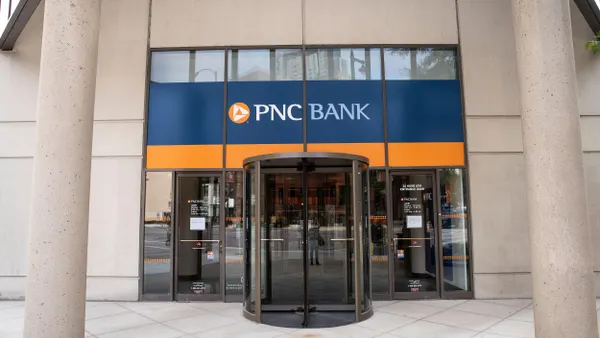If you’re frustrated by B2B payment inefficiencies, embedded payments that enable a virtual card solution may be the answer. Virtual card transactions accounted for $36 billion last year, and they’re expected to reach $174.3 billion in global transaction volume by 2028. The fast rise is for good reason – embedded payments offer companies increased convenience, improved expense and cash flow management, and a better user experience.
“Companies looking to improve the payment experience for their employees, suppliers, and customers should seriously consider embedded payments,” says Laretha Elliott, U.S. Bank vice president of digital payments innovation.
However, for many organizations, enabling embedded payments is a strategic evolution that occurs step by step. Modernizing the payment process can seem daunting. A forward-thinking strategy, aligned with your goals and the right partner, can minimize the burden and maximize the benefits. Here are four steps for moving your business toward embedded payments:
1. Start with a test and learn strategy.
If your company still relies on manual payment processes or is still getting the hang of mobile payments, don’t fret. You can start the transition to embedded payments slowly with a test-and-learn strategy. Using this approach, you can send virtual cards directly to your employees' mobile wallets. This will help you get a better sense of how they’re used, when they’re effective, what users think and more.
“You get the chance to see the value without investing in a full implementation,” Elliott says. “It’s a stepping stone toward embedded payments.” For example, one company that Elliott has worked with started by manually sending virtual cards to one division. The results from that pilot motivated the organization to expand its virtual card program even more broadly than it’d originally intended.
2. Automate a virtual card solution.
Once you’ve grown comfortable manually sending virtual cards, you can investigate automating the process. “The next step is integrating the ability to create cards automatically,” Elliott says. Adding that capability is relatively straightforward and doesn’t require a full API integration. Instead, many organizations tap into a pre-built app such as U.S. Bank Instant Card®. “The automation helps you garner even more value from virtual cards,” Elliott says. The Instant Card online or desktop app gives your company access to controls like spending and activation limits, customizable merchant categories codes (MCC) and expiration dates that are specific to a business purpose. These controls mean managers and team leaders don’t have to approve – or question – spending after the fact. The virtual card controls work in real time as the spending occurs.
3. Integrate the CaaS API.
After experiencing the benefits of automated virtual cards, you may be ready to integrate CaaS into your organization’s technology. A full API integration allows you to create seamless embedded payments that are built into your digital experience. Ride-sharing apps provide a great example of this. “You take the payment experience and integrate it so that it doesn’t stick out as an obstacle,” Elliott says.
API integration also provides a mobile component that’s designed to match your brand. While investing in a full API that enables embedded payments is a big leap, if you’ve taken a stair-step approach, your organization will be more than prepared. Instead of scrambling to determine how and when your users might leverage embedded payments, you can implement a strategy based on your previous wins—and get even more in the process.
4. Leverage the extras to take full advantage.
Once you’re using the CaaS API, you can also explore other integrations, vendor services and payment capabilities that are available. For example, with U.S. Bank, you can incorporate real-time payments, ACH, and treasury management services. Companies can also take advantage of U.S. Bank’s implementation experts and marketing support to ensure the integration and rollout of their embedded payment products is as successful as possible. “At that point, you’re optimizing both the CaaS and the expertise of U.S. Bank to ensure you make the most of your embedded payments,” Elliott says.
Ensuring the satisfaction of your employees, suppliers, and customers is a crucial part of operating in a digital age. “We live in a digital world, and people want and expect high-quality digital experiences,” Elliott says.
U.S. Bank CaaS is your partner in this digital evolution, offering embedded payment solutions and strategies that align with your needs and help you meet these expectations.
Connect with U.S. Bank to learn how your business, employees and customers can benefit from implementing CaaS.










